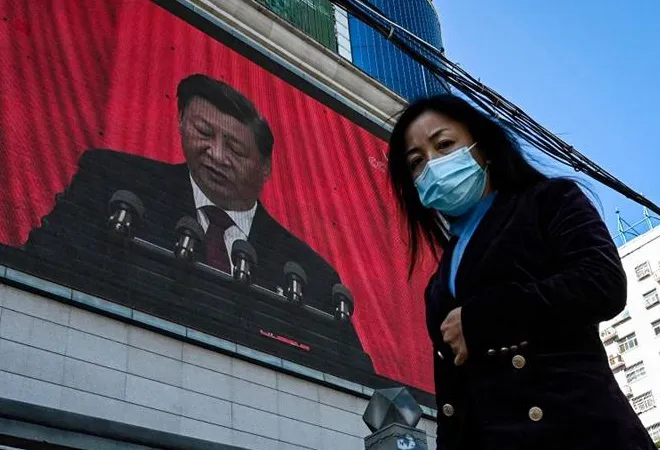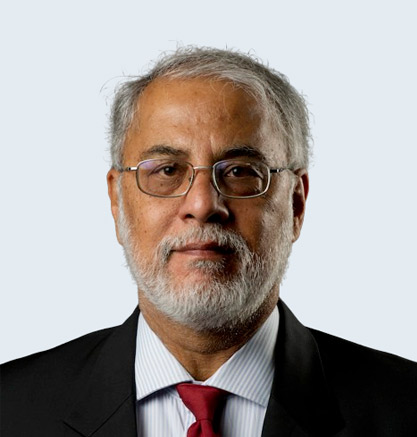-
CENTRES
Progammes & Centres
Location
If the 20th CCP meet, which began on Sunday, enhances Xi Jinping’s power, it would reinforce trends associated with his tenure: Assertiveness abroad, no compromises on boundary issues, and a willingness to use the military as an instrument of policy

A feature of Xi’s rule has been to persist with policies regardless of the blowback, whether it is concerning its economy, Taiwan, the South China Sea, zero-Covid, or the Indian border. A third, and possibly fourth term, could lead to Xi moving Chinese policies into a dangerous rut. Given our adversarial relations, this has implications for us, considering that our economy is much smaller than that of China, and the PLA is already much more powerful than its Indian counterpart. The challenge is not just about the Himalayan border, but South Asia and IOR, where Chinese diplomacy and resources are being liberally used to undermine India. The Chinese have long used Pakistan to offset India’s clout in South Asia. In the past decade, they used the disputed Sino-Indian border in the same way. The unsettled border is of value to Beijing since periodic flareups with China and Pakistan help pin down the Indian military to a continental orientation, rather than embrace its oceanic future. A feature of Chinese policy is the personal attention that Xi has paid to Tibet and Tibetan affairs. Since the Doklam crisis of 2017, the Chinese have begun a major build-up of forces in Tibet, concentrating on new heliports, troop billets, air defence facilities and air bases. But the most significant action was the 2020 Chinese military mobilisation in Tibet and their move to blockade Indian forces at select points on the Line of Actual Control (LAC) in eastern Ladakh. Beginning in 1993, India signed a series of confidencebuilding agreements with China to maintain peace and tranquillity along LAC. They were centred around ironing out differences over the contested points along the line. The 1996 agreement committed the two countries to notify each other in the event of an exercise involving 5,000 personnel. Under the Border Defence Cooperation Agreement of 2013, doubts about any particular part of LAC were to be clarified through various mechanisms such as flag meetings and senior officials’ meetings.Under Xi’s leadership, the People’s Liberation Army (PLA) transformed from a home defence force into one with fastevolving intervention capacity in the western Pacific and the Indian Ocean Region (IOR).
But these agreements were thrown into the dustbin when 50,000 Chinese troops amassed near LAC in 2020 without warning and occupied certain contested points that had hitherto been patrolled by both sides. In retrospect, the biggest casualty of the Xi Jinping era has been the collapse of the patiently created climate of trust in managing LAC by the two sides. External affairs minister S Jaishankar has noted that Beijing has yet to give a proper explanation of why their troops acted in the way they did. India has rejected Chinese calls for a restoration of normalcy till the situation on LAC is restored to the pre-April 2020 status. All this is all the more remarkable because of the numerous meetings between Prime Minister Narendra Modi and Xi in bilateral and multilateral settings. After Doklam, Xi and Modi established an enhanced format of consultation through informal summits, the first of which was held in Wuhan in 2018 and then in Chennai in 2019. Yet, months after the Chennai summit, Xi saw it fit to order the PLA move for motives we can only interpret, rather than state with certainty. In our view, they had to do with China’s larger India strategy. The Chinese have a long-term view of India, the only country in Asia with the heft and history to match China. Having outstripped us in economic and military power, China no longer feels obliged to maintain the confidencebuilding measures (CBMs) of the 1990s. Today, in their hierarchical worldview, only the US is a peer, all the others, including India, are subordinate powers. Also, New Delhi, which is cosying up to the US, needed to be shown its place. Raising temperatures on the disputed border was a good way to do that.Since the Doklam crisis of 2017, the Chinese have begun a major build-up of forces in Tibet, concentrating on new heliports, troop billets, air defence facilities and air bases.
Beijing has given no indication that it is ready to resolve the vexed border problem. There have been 22 rounds of talks between our special representatives since 2003 to work out a border settlement, but as of now, there is no end in sight. A third Xi term is only likely to reinforce the trends associated with his tenure — assertiveness abroad, no compromises on issues relating to China’s boundaries, and a willingness to use the military as an instrument of policy.The Chinese have a long-term view of India, the only country in Asia with the heft and history to match China. Having outstripped us in economic and military power, China no longer feels obliged to maintain the confidencebuilding measures (CBMs) of the 1990s.
The views expressed above belong to the author(s). ORF research and analyses now available on Telegram! Click here to access our curated content — blogs, longforms and interviews.

Manoj Joshi is a Distinguished Fellow at the ORF. He has been a journalist specialising on national and international politics and is a commentator and ...
Read More +